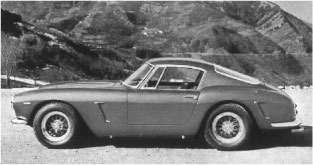Getting the Right Shapes

I had to do some “arts and crafts” the other day.

Mark at the Panel Shop is rebuilding the nose for me on a Ferrari 330GTC and asked me to make some templates on a car I have at my shop so he can compare it to the shape he’s making.

He showed me the three reference points he wanted to look at, so I made cardboard templates that followed the profile on this silver car.

I drove these templates down to the Panel Shop, and compared it to the panel Mark was fixing. After tweaking and moving the metal around, the piece was pretty close. Checking these shapes with other cars helps get the shapes as close to original as we can. We are lucky to have access to several cars to take these measurements, but I always wonder how to body shops do it without another car to check?

Because of previous crash damage, Mark replaced the radiator and bumper support structure. The previous repair after an old accident pulled out these bent tubes, but left them deformed and bent.

New tubes were tacked in place to the nose of the car, and will be tig welded in place once we are sure the clearances for the radiator and cooling fans are there.

Although a lot of this will be hard to see when the nose is finished, the support structure will be stronger and straighter to attach the bumper supports.

We’re saving all the old tubing to show how much of it was bent and deformed.

A similar project is going on with a Dino on the other side of the shop. This car came to the Panel Shop with a nose that was fabricated by another shop. Similarly, the nose was filled with plastic filler and drooped at a much steeper angle to the hood. As Mark rebuilt the nose, he spent countless hours staring at the lines of the car. I joined him for several minutes discussing how the body lines joined up from the front of the car with the back, and whether the bumpers were above or below the lines. The more cars we look at in pictures and in person seemed to bring up more questions. I’ll take some measurements of the blue Dino I have at my shop to add another data point to Mark’s research.




